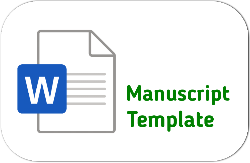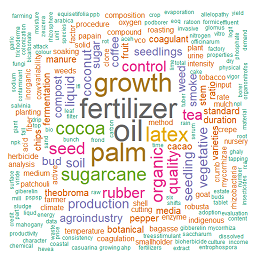Pengaruh Aplikasi Glifosat terhadap Efikasi dan Komposisi Gulma Pertanaman Kelapa Sawit Tanaman Menghasilkan Muda
DOI:
https://doi.org/10.25181/jaip.v7i1.978Keywords:
composition, efficacy, herbicide, glyphosate, oil palm, weedsAbstract
This study aimed to obtain the effective dose of isopropylamine glyphosate herbicide for controlling weeds in oil palm plantation andto study the change of weed composition after glyphosate application in early producing oil palm plantation.The research was conducted in smallholder oil palm plantation located in Srimulyo Kenanga Sari Village, Seputih Surabaya Sub-district, Central Lampung Regency and Weed Science Laboratory of Agriculture Faculty, Lampung University from November 2017 to January 2018. This research used randomized block design (RBD) with 4 replications and 7 treatments of 5 isopropylamine glyphosate herbicide doses (1.080, 1.440, 1.800, 2.160, and 2.520 g.ha-1), mechanical weeding, and control. The data homogeneity tested by Bartlett test, the data additivity tested by Tukey test, and the difference of median value tested by the Least Significant Difference (LSD) at 5% level. The results showed that all of isopropylamine glyphosate herbicide doses were effective in controlling total weeds, grassy weeds (Axonopus compressus, Ottochloa nodosa, Imperata cylindrica) and nutsedges (Cyperus rotundus) for 4—12 weeks after application (WAA) and broadleaf weeds (Praxelis clematidea) for 4 WAA. Glyphosate application changed weed composition at 4, 8, and 12 WAA of observations from grassy weeds to broadleaf weeds.Downloads
References
Fauzi, Y., Widyastuti, Y. E., Satyawibawa, I., & Paeru, R. H. (2012). Kelapa Sawit. Jakarta: Penebar Swadaya.
Kremer, R. J., & Means, N. E. (2009). Glyphosate and glyphosate-resistant crop interactions with rhizosphere microorganisms. European Journal of Agronomy, 31(3), 153-161.
Lubis, R. E., & Widanarko, A. (2011). Buku Pintar Kelapa Sawit. Jakarta: AgroMedia.
Mukarromah, L., Sembodo, D. R. J., & Sugiatno. (2014). Efikasi herbisida glifosat terhadap gulma di lahan tanaman kelapa sawit (Elaeis guineensis Jacq.) belum menghasilkan. Jurnal Agrotek Tropika, 2(3), 369-374.
Nasution, U. (1986). Gulma dan Pengendaliannya di Perkebunan Karet Sumatera Utara dan Aceh. Pusat Penelitian & Pengembangan Perkebunan Tanjung Morawa (P4TM).
Oktavia, E., Sembodo, D. R. J., & Evizal, R. (2014). Efikasi herbisida glifosat terhadap gulma umum pada perkebunan karet (Hevea brasiliensis [Muell.] Arg) yang sudah menghasilkan. Jurnal Agrotek Tropika, 2(3), 382-387.
Purba, R. Y., Arsyad, D. K. , & Purba, P. (2004). Kerugian akibat sanitasi buruk pada kultur tehnis tanaman kelapa sawit. Warta PPKS. 12 (1) : 9-13.
Rolando, C., Baillie, B., Thompson, D., & Little, K. (2017). The risks associated with glyphosate-based herbicide use in planted forests. Forests, 8(6), 208.
Sigalingging, D. R., Sembodo, D. R. J., & Sriyani, N. (2014). Efikasi herbisida glifosat untuk mengendalikan gulma pada pertanaman kopi (Coffea canephora) menghasilkan. Jurnal Agrotek Tropika, 2(2), 258-263.
Tjitrosoedirdjo, S., Utomo, I. H., & Wiroatmodjo, J. (1984). Pengelolaan Gulma di Perkebunan. PT. Gramedia. Jakarta, 225.
Tomlin, C. (1994). A world compendium-The pesticide manual, incorporating the agrochemicals handbook. The Pesticide Manual British Crop Protection Council, Surrey, UK, 10th, 451-452.
Downloads
Published
How to Cite
Issue
Section
License
Authors who publish with Jurnal Agro Industri Perkebunan agree to the following terms:
Authors retain copyright and grant the Jurnal Agro Industri Perkebunan right of first publication with the work simultaneously licensed under a Creative Commons Attribution License (CC BY-SA 4.0) that allows others to share (copy and redistribute the material in any medium or format) and adapt (remix, transform, and build upon the material for any purpose, even commercially) with an acknowledgment of the work's authorship and initial publication in Jurnal Agro Industri Perkebunan.
Authors are able to enter into separate, additional contractual arrangements for the non-exclusive distribution of the journal's published version of the work (e.g., post it to an institutional repository or publish it in a book), with an acknowledgment of its initial publication in Jurnal Agro Industri Perkebunan. Authors are permitted and encouraged to post their work online (e.g., in institutional repositories or on their website) prior to and during the submission process, as it can lead to productive exchanges, as well as earlier and greater citation of published work.


























